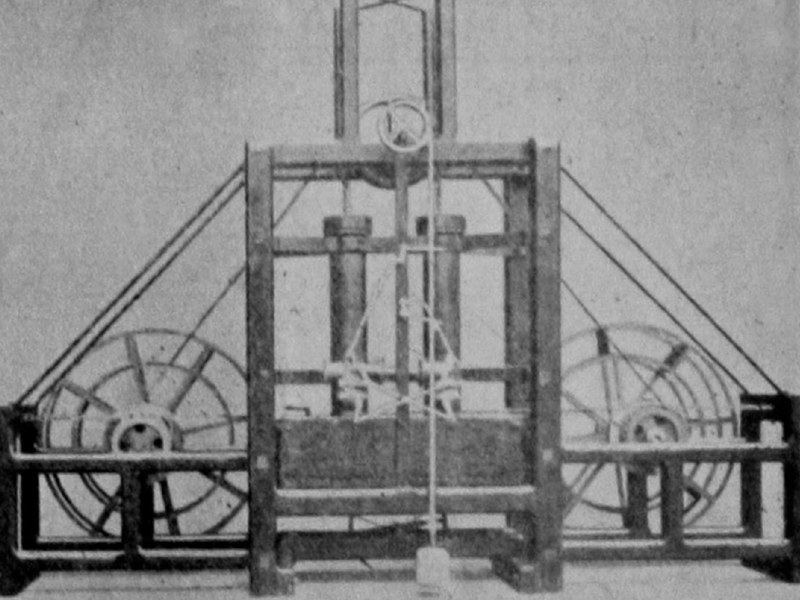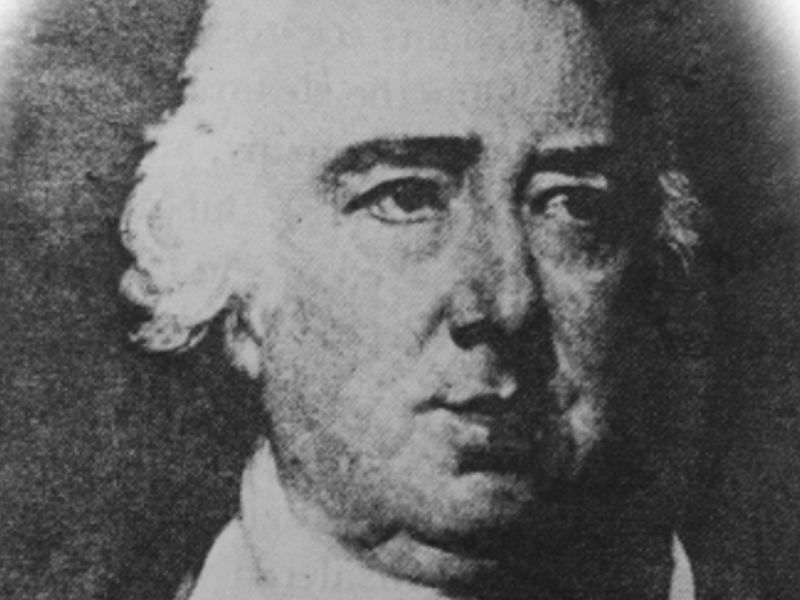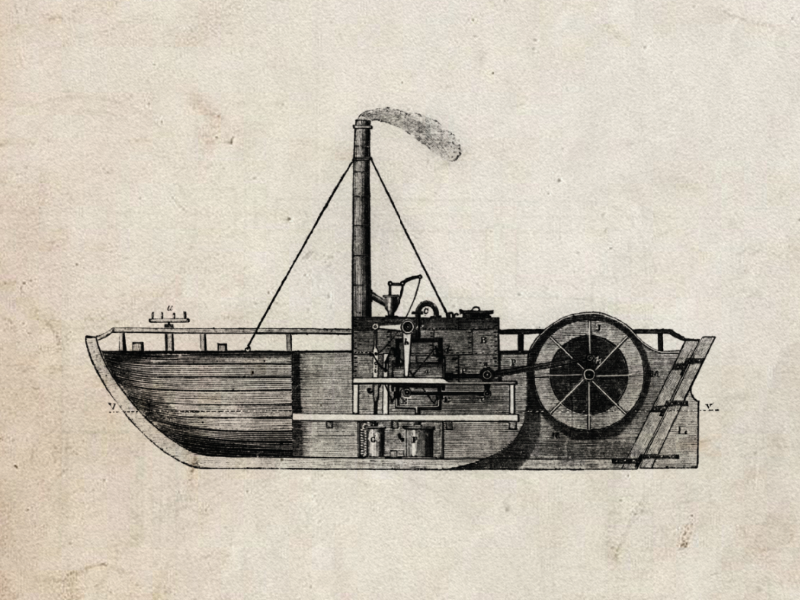In 1800, Sir Thomas (Lord) Dundas, Governor of the Forth & Clyde Canal Company, asked William Symington to build a commercial steamboat for use on the canal.
Following several experiments, Symington returned to the canal in 1801 with the ‘Charlotte Dundas’ named after Lord Dundas’ daughter. The vessel was a wooden-hulled craft, probably designed by Captain John Schank of the Royal Navy and built by Alexander Hart of Grangemouth. This initial vessel had successful tests on the canal, but the project was not without technical problems.
In 1802, a second boat was built to Symington’s modified design with an improved engine. The vessel was the result of many experiments with various hull designs and engine drive mechanisms.
The boat, measuring 65 feet long, 16 feet wide and 8 feet deep, had a paddle wheel in a cavity in the stern of the vessel and two rudders on either side for steering. It was built by John Allan at Grangemouth, with the engine made at the Carron Company. The new hull around its powerful horizontal engine was cutting edge technology of its day.
On 28 March 1803, The Charlotte Dundas towed two laden sloops, Active and Euphemia, weighing 130 tons, along the canal from Lock 20 at Wyndford to Port Dundas in Glasgow, a distance of 18½ miles in 9¼ hours. The vessel performed well, but fears that the boat would damage the canal banks persisted and the project was abandoned. The Charlotte Dundas, without her engine, served for many years as a dredger before meeting its end at Lock 10.

William Symington’s Dalswinton engine

Lord Thomas Dundas

Lord Dundas’ daughter Charlotte Dundas
The Charlotte Dundas has gone down in history as the world’s first practical steam powered boat. William Symington’s innovative design for the vessel’s propulsion system created a step change in steam navigation.
The River Carron and The Charlotte Dundas
The Charlotte Dundas hull was constructed and launched into the Carron a few hundred yards downstream of the Lock 1 seating and viewing area. The steam engine that powered the vessel was manufactured in Carron Ironworks and installed and commissioned in a dry dock at Carronshore. It is highly likely that part of the maiden voyage of the Charlotte Dundas will have taken place on the stretch of the River Carron running parallel to Charlotte Dundas Heritage Trail at what is now Lock 1.


